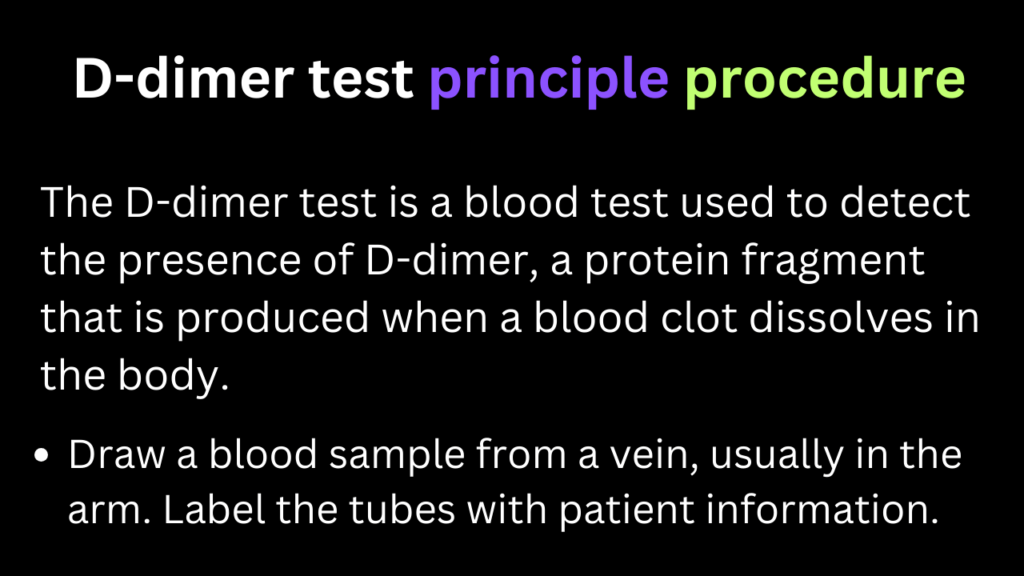The D-dimer laboratory test is used to detect the presence of D-dimer (a protein fragment that is produced when a blood clot dissolves in the body).
The principle of the D-dimer test is based on the fact that when blood clots are formed and then broken down through a process called fibrinolysis, they release D-dimer protein in the bloodstream.
D-dimer test procedure
- Draw a blood sample from a vein, usually in the arm. Label the tubes with patient information.
- Gently mix the blood sample to prevent clotting.
- Centrifuge the blood sample to separate the serum or plasma from the cellular components.
- Utilize an appropriate laboratory method for D-dimer detection, such as ELISA or latex agglutination.
- Perform quality control procedures to ensure the accuracy and reliability of the test results.
- Finally measure the absorbance to quantify the D-dimer levels in the sample.
- Compare the results to established reference ranges.
D-dimer test high Means
A high D-dimer test typically indicates increased blood clot formation and breakdown, suggesting conditions like deep vein thrombosis (DVT), pulmonary embolism (PE), or disseminated intravascular coagulation (DIC).
d-dimer test normal range
The normal range for D-dimer levels is typically below 500-550 micrograms per liter (μg/L) or D-dimer units (DDU). Elevated levels may indicate conditions involving increased blood clot formation and fibrinolysis,
what causes elevated d-dimer blood test
Elevated D-dimer levels can be caused by various conditions such as blood clots (deep vein thrombosis, pulmonary embolism), inflammation, infection, trauma, surgery, and certain medical disorders.
what does the d-dimer test show
D-dimer test typically shows increased blood clot formation and breakdown. It happens in deep vein thrombosis, inflammation, infection, trauma.
